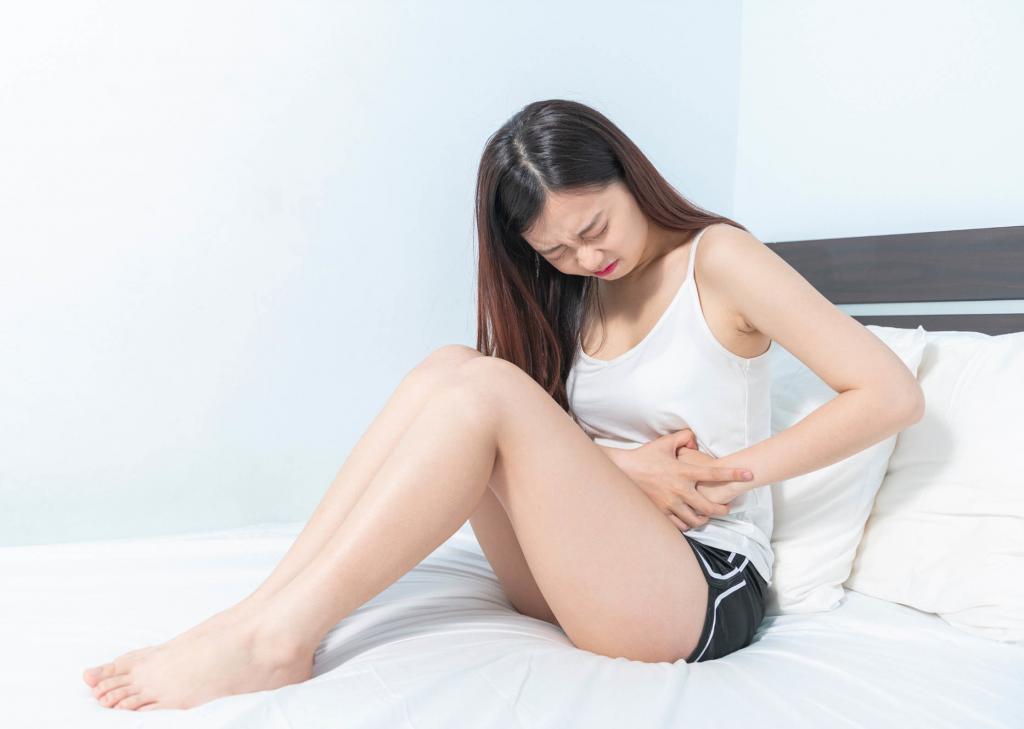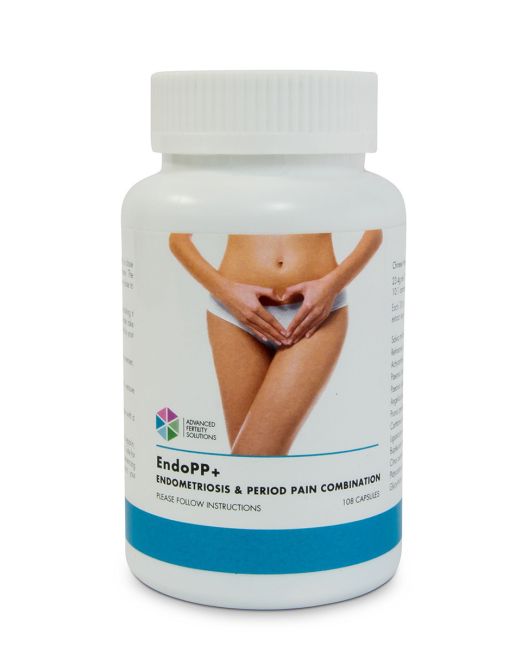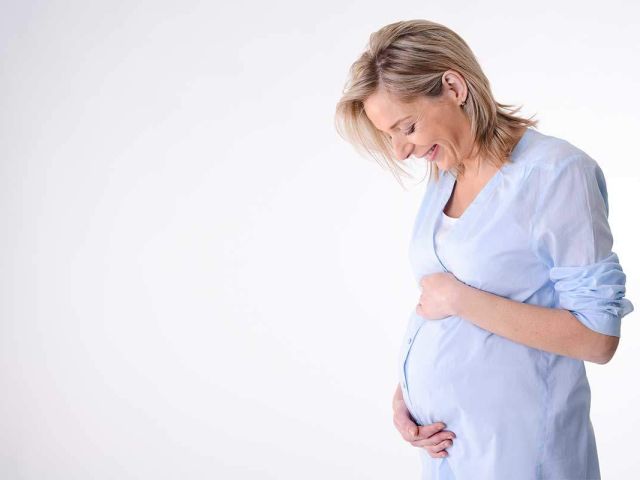This post is also available in: Español
rethinking endometriosis care.

long-term endometriosis care:
who is fighting with you?
endometriosis care needs new ideas.
A life with endometriosis is too real for 10% of all women. The demands placed on a woman to cope with the impact of endometriosis on her life are enormous. The pain, visits to the doctor, and medication become normal, but the toll on mental, emotional, sexual, and relationship health doesn’t have a prescription. Endometriosis is a chronic, estrogen-dependent, and inflammatory disease of unknown etiology and without a cure.
‘Endometriosis requires a life-long management plan with the goal of maximizing the use of hormone treatment and avoiding repeated surgical procedures for pain management and improved quality of life” (2).
everyone is frustrated
The personal consequences of a life with endometriosis are far greater than what the standard model of care can treat. Women with endometriosis invariably seek medical help. Despite substantial healthcare resources being directed at women for endometriosis care, clinicians complain that endometriosis treatment is often frustrating due to limited medical treatment options, complex surgical treatment, and high recurrence rates.
It is no secret
It is no secret that medical treatments of endometriosis are suppressive, and not curative, providing temporary relief of symptoms only during treatment (2). Once the medical treatment stops, the silent-footed steps of endometriosis resume (18). Laparoscopic surgery removes the lesions that cause the pain, and even though it is invasive, expensive, and comes with a real risk of complications, the pain relief the surgery provides can last for many years (19). However, 20% to 50% of surgery patients repeat the procedure within 2 -5 years, respectively (3)(3a).
remission condition
50 years of research and treatment, no drug has really distinguished itself as superior or more beneficial over any of the others (11). With ‘levels of benefit’ so similar, their ‘length of benefit’ can define which treatment is ultimately chosen. Length of benefit is measured by the rate of remission reported by the end of the research trial, so drugs with higher remission rates can infer greater benefits through the ‘prevention of recurrence” (12). The challenge is there is not one study that reports who, or how many women, never relapse out of remission after any treatment. Does that mean they are cured?
The ‘cure no-cure conundrum’
Endometriosis is officially classed as incurable. Recurrence rates are very well documented in research, what happens to those women reported as in remission? Do these remission rates infer the cure rate for women using those particular treatments? For example, 50% of endometriosis patients repeat laparoscopic surgery for the same problem within 5 years of the previous surgery: is it, therefore, reasonable to assume the ongoing remission or ‘cure rate’ is up to 50% after 5 years of laparoscopic surgery? Interpreting remission rates can be misleading, as no study has ever reported or investigated the ongoing status of remission patients beyond 5 years.
is that something on the horizon?
According to many experts in the field, the current treatment of endometriosis is not satisfactory, and there is a pressing need for new therapeutics that are more effective, more tolerable, and less problematic (5). Better drugs for endometriosis hopefully will be available in the future, but what about the patients suffering today who desperately need those answers now? (16).
Only the pharmaceutical industry has the resources and expertise to bring drugs to patients (17).
indispensably yours.
We are all fully dependent on this industry for innovation and development of medical treatments we can benefit from (14). Drug development is an arduous, risky, and costly endeavor (14). Despite a critical need from doctors and patients for new and improved endometriosis treatments, a lukewarm interest to invest in research and development pervades (11).
outside the box.
Rethinking endometriosis management allows women to consider options beyond the medically accepted ‘control’ instead of ‘cure’ compromise while waiting for treatment options to improve.
A multi-disciplinary approach offers insight, education, and new strategies for endometriosis treatment, empowering women to take more control and over their long-term health.
by popular demand.
The multi-disciplinary approach gives the recommendation to try acupuncture and traditional Chinese herbal medicine. These two traditional therapies are popular and the most commonly used alternative therapies, with many endometriosis patients reporting benefits. (88).
Traditional herbal medicines are commonly used for pain relief and ongoing management of endometriosis symptoms, and appreciated by many women around the world (77). The widely accepted benefits of traditional herbal medicines have integrated with societies due to their long and unbroken history of use (99).
There has been a strong “return to nature‟ shift in trend from synthetic to herbal medicine (44).
endopp+ formula
The endometriosis formula offered by Advanced Fertility Solutions contains a selection of traditional herbal ingredients known for pain relief, anti-inflammatory effects, and pain management for gynecological problems.
research & benefits
Traditional Chinese herbal ingredients and formulations have been studied in comparative trials against common modern medical drug therapies in patients( 102). Other research trials compared endometriosis surgery and ongoing danazol treatment with specific herbal formulations for long-term outcomes (103). In all trials, the findings reported similar or improved pain relief with herbal formulations over drug therapy. Improvements in quality of life outcomes were significantly higher in the herbal medicine group as a result of better toleration of the ingredients and fewer side-effects common to medical drug treatments (111). Other studies imply slower remission rates after using natural medicines for ovarian endometriosis (104).
There is an urgent need to rethink endometriosis care in order to provide a more comprehensive, patient-focused approach with long-term goals.
who is fighting the good fight?
Drug companies fighting the fight for women with endometriosis appear to have stagnated (19). Despite 50 years of promising research trials, only 6 drugs have been approved for clinical use in endometriosis treatment. (19). The ongoing drug trials of the last 20 years have failed to provide real-world results, and “have reduced the general interest for R&D in the field” (21).
Better drugs for endometriosis hopefully will be available in the future, but patients suffering today desperately demand therapeutic answers now (16).
Welcome to primary care.
Women with endometriosis invariably seek medical help. Upon entering the health care system, a woman’s primary care is commonly managed by a single physician, eventually moving to secondary care managed by a single gynecologist. This model of single-provider care for a complex chronic disease without a cure can pose challenges for both patients and care providers. Despite substantial healthcare resources being directed at endometriosis care, women are no better off than they were in the 1990s.
Up to 75% of women with endometriosis often rely on ‘self-management’ strategies to help themselves when their current medical treatments do not give sufficient pain relief or to manage undesirable side-effects they experience (4).
Clinicians complain that endometriosis treatment is often frustrating due to limited medical treatment options, complex surgical treatment, and high recurrence rates (11).
Clinicians are not the only ones complaining
Indeed women with endometriosis are frequently dissatisfied with their care and seek alternative strategies to manage their symptoms (20) that they often do not discuss with their health care physician (21). Of all alternative treatments used acupuncture (23) and traditional herbal medicine (22) receive the most attention from patients (24).
Recently there has been a “return to nature‟ shift in trend from synthetic to herbal medicine. The use of natural medicines is growing in acceptance, with many people admitting they have tried it at least once (25).
Why is it, pain anywhere in the body is a sign of something wrong, except when women have their period?
endometriosis watch
Why is it, pain anywhere in the body is a sign of something wrong, except when women have their period? The belief system of ‘period pain is normal’ is accepted and repeated to women by doctors and national health institutes around the world.
Most women diagnosed with endometriosis report symptoms of strong period pain (primary dysmenorrhea), beginning in the teenage years (4). Dysmenorrhea is the most common and first form of menstrual disorder for 50–90% of young women (5), with 1 in 3 of them requiring the assistance of pain medications to cope (6).
63% of women seeking medical treatment for period pain are told nothing was wrong with them (7).
Just because it is common doesn’t mean it is normal.
The attitude and acceptance of “period pain is normal”, and “there is nothing wrong with you,” can encourage a woman to dismiss her pain and slow the recognition of a more serious or chronic problem. Combine this with the accessibility of over-the-counter painkillers and the widespread use of oral contraceptives in teenagers, the ability to distinguish period pain from developing endometriosis becomes problematic. The delay between endometriosis onset and diagnosis averages at 6.7 years, extending up to 10 – 12 years (9).
About two-thirds of adolescent girls with chronic pelvic pain or dysmenorrhea have laparoscopic evidence of endometriosis. About one-third of these adolescents with endometriosis have moderate to severe disease (9).
A diagnosis of endometriosis requires a laparoscopic surgical procedure for confirmation (10). Research has been unable to find definitive, and consistent biomarkers for the diagnosis of endometriosis without surgery (9). Magnetic Resonance Imaging (MRI) is effective for many cases, however, discouraged for first-line diagnostic use (12).
Ways you can recognize endometriosis (13).
- increasing period pain, in severity and duration
- pelvic pain starts 1-3 days before menstruation begins.
- NSAID painkillers need higher doses, less effective, or ineffective.
- deep pelvic pain during intercourse.
- constipation and straining when going to the bathroom.
- menstrual clotting increasing in size or frequency
- darkening color of menstrual flow.

Why is it, pain anywhere in the body is a sign of something wrong, except when women have their period?

you make the final decision
Many endometriosis patients require a life-long personalized management plan with the goal of maximizing medical treatment and avoiding repeated surgical procedures. Doctors will explain the treatment options and give their recommendations, however, the final choice must be made by the patient.
weighing up the options
The choice of the therapy has many considerations: short and long-term cost-risk-benefit analysis, incidence and severity of adverse effects, wait-time for results, (12) age of the patient, characteristics, and intensity of pain, method and frequency of delivery, desire and time to conceive, and presence of concurrent ailments (17).
Strategies
Doctors have a long list of drugs to choose from, however, the variety of mechanisms targeted and final goals are limited by their similarity (16). Though medical therapies have been studied extensively for 50 years, no drug has really distinguished itself as superior or more beneficial over any of the others! (11) This changes a doctor’s recommendation from a clear choice that provides superior benefit to minimizing any adverse effects from the treatment as a distinguishing priority (14).
the medical guide dog.
Practice guidelines help doctors and patients make informed decisions when a clear choice of treatment is hard (16). When faced with an array of prescription options, the Evidence-Based Medicine (EBM) guidelines for best practice, based on high-quality scientific evidence, can assist with, and often justifies the choice of treatment (77).
official EBM guidelines for medical endometriosis management: ESHRE 2014
“Currently, hormonal contraceptives, progestagens and anti-progestagens, GnRH agonists and antagonists and aromatase inhibitors are in clinical use. With no overwhelming evidence to support particular treatments over others, it is important that the decisions involved in any treatment plan are individual, and that a woman is able to make these based on an informed choice and a good understanding of what is happening to her body” (24). In layman’s terms this translates into “we can’t help you with this, please use full disclosure, and leave the final choice of treatment to her…”
“One of the most striking experiences in writing this guideline was the notion that so many key questions could either not be answered or that only a little or low-quality data were available.” personal note from the author submitting the guidelines for publication (25).
Management
Many studies explore the burden on wellbeing and quality of life for women with chronic endometriosis. This summary reports data from very large and comprehensive cross-sectional surveys from 2007 -2020. This reports women’s experiences commonly associated with endometriosis treatment and management using healthcare.
reports, results and outcomes.
- 70% of women experienced unresolved pain (aa).
- 57% reporting dysmenorrhea (menstrual pain) (aa).
- 47% reporting dyspareunia (pain during sex) (bb).
- 60% reporting other non-menstrual pelvic pain (bb).
- 46% of women reporting having received at least three medical treatments (dd).
- 11-19% of women reported no reduction in their pain symptoms (cc).
- 12 – 25% report discontinuation of medical treatment due to side-effects (cc).
- 40% – 70% report average to high levels of satisfaction using combined oral contraceptive and progestin treatment for pain (gg).
- 42% having undergone at least three surgeries (dd).
- 49% of women using narcotics for pain management continue taking narcotics one year after laparoscopy (dd).
- 20% – 55% report remission within 2- 5 years (respectively) of surgery (dd).
- 25% – 50% of women seeking fertility treatments also have endometriosis (ee).
- women under 35 years are twice as likely to have fertility problems than women who have never had endometriosis (hh).
- Ovarian reserve declines at a faster rate for women with untreated ovarian endometriosis (ee).
- 50% of women with mild endometriosis, 25% with moderate endometriosis, and very few with severe endometriosis can conceive without help (hh).
The origins, theories and methods used for the benefit of endometriosis symptoms may vary, yet they all have one thing in common: stop the pain and keep it away for as long as possible.
the limits of medicine
It is no secret that currently available treatments of endometriosis are suppressive, and not curative. They are associated with the temporary relief of symptoms during treatment. However, once the treatment stops, the progression of endometriosis and its symptoms is the rule (18). Whereas drug therapy provides symptomatic relief of endometriosis pain, surgery removes the lesions that cause the pain.
surgery, sooner or later?
Surgical laparoscopy should be considered when drugs fail or when informed women prefer surgery over hormonal treatments (19). Other experts suggest surgery as the primary treatment of endometriosis (20). Though invasive, expensive, and with increased risk of complications, pain relief post-surgery can last for many years.
The earlier surgery side.
The laparoscopic surgical removal of endometrial lesions often alleviates pain for 6 – 12 months, providing long-term results for up to 45% of patients 7 years later. Remission rates to pre-surgical pain levels and disease progression are between 20% to 50% within 2 -5 years respectively (3). There is a causative link between long-term surgical benefits and low remission rates within the low to medium pain pre-surgery patients and the earlier age at the first surgical treatment (4).
postpone surgery as long as possible side.
Multiple surgical procedures should be avoided whenever possible because surgery has inherent risks and also might result in adhesions that can cause pelvic pain and decreased ovarian reserve (5). With a 50% chance of relapse, earlier surgeries in life expose patients to repetitive suffering, frustration, ongoing hormone therapy with increased risks of serial surgery, and reduced fertility (6).
The low-value to be avoided side
Low-value surgical interventions are characterized by an unfavorable balance between potential benefits, potential harms, and costs, which should be discouraged in women with endometriosis. You can read more about it here (100).
There are no right or wrong answers when choosing a treatment plan. Medical treatment with hormone therapy is always the beginning (21). Maintaining long-term hormone therapy as treatment is unlikely in young women, however, becomes more acceptable for ageing women, and those who no longer desire children (22).
Surgery is necessary for diagnosis, however, an inevitable result of failed medical treatment (14). Depending on the level of endometriosis present, surgery may be necessary to improve pregnancy chances. Surgery may also be necessary to preserve fertility by preventing ongoing damage to the reproductive organs, the ovaries especially (12). For up to 20% of life-long endometriosis sufferers, final and conclusive relief only comes from a complete hysterectomy removing both ovaries and uterus (19).
What is the fastest road from start to finish?
The concept of continuous suppression of the menstrual cycle both before and after surgery is considered by some to be the optimal strategy for long-term pain management and disease progression, only breaking for pregnancy and childbirth (20). Like all other studies investigating the benefits of management strategies, there is no evidence to suggest any single or combined medical and/or surgical treatment provides improved or longer-term benefits (21).
Reality check
What is being offered here, now, is not designed to create hope, or guarantee effect or improvement over anything you may have already experienced. It is an option that has shown some positive effects on endometriosis symptoms under research conditions. Meta-analyses and systematic reviews that report on herbal formulations to benefit endometriosis sufferers are nothing new. Comparisons of patient satisfaction and time to remission with surgical and ongoing hormone effectiveness have been explored. The results are promising. Chinese botanical formulations are generally well-tolerated, and unwanted effects can have simple solutions. Physiological pathways for effect have likewise been explored and expounded (33). However, like most research outcomes, ongoing research is required to improve the validity of the conclusions.
The Chinese have used natural botanical products as medicine for effect for a very long time. In China and other eastern nations, their use is normal, wide-spread, and accepted. Research into the chemical and biological effects on human physiology of these traditional ingredients is extensive and ongoing. Conclusive evidence for positive effects against endometriosis likewise is ongoing.
The botanical formulation offered here is consistent with a formula used for effect across the studies mention here. (30)(31)(32)(33).
Side note on science
You may already be aware, but just because some science says something has effects, regardless of who is saying it, doesn’t mean it will have the same effect for you. Considering how varied improvement and effects are for women with accepted methods, it is reasonable to assume these variances are likely the same for other approaches.
The paths before you
There are many paths to choose from for managing endometriosis problems. Exercise, diet, weight loss, and pregnancy are known to help. For many, symptoms may subside on their own – no-one really knows why. Whatever paths you do take, keep your mind open to alternatives, they may lead to benefits you could not have anticipated. We wish you all the best on your journey.
Please click on any link you see to take you to the research publication or expanded definitions of terms.
refunds & disclaimer
Please click to view our refund policy and disclaimers
Endometriosis Formula
Ingredients and FAQ’s
What You Need To Know
New mothers in their 40’s are becoming more common. Falling pregnant in your 40’s is harder than in your 20’s, yet the desire for children comes at different ages. There are some critical things you should know to help you fall pregnant in your 40’s. Learn about getting pregnant naturally after 40.
Low AMH is no the end to your fertility; it is a problem to overcome. Low AMH levels are a big problem for IVF…they don’t have to be your problem too. Here are 10 things you should know right now.
Diets for health are plentiful. Can a fertility friendly diet help boost your fertility potential? Let’s fill in the gaps and make life easier for you.
Need To Talk?
Are you trying to understand how to better manage your endometriosis? Dr. Scott Martin leads the team for Advanced Fertility Solutions formulas. He has been helping women with endometriosis since 2010 and is now available globally for Personal Consultations. In this time you will discuss test results, medical and lifestyle history. By the end of your consultation, you will have insight and a treatment plan to help put you in control of your fertility journey.
This post is also available in: Español
More than 1 year ago, my husband and I had a failed IVF. The doctor diagnosed me with polycystic ovarian syndrome and an AMH level of 1.1. I found this website and followed Dr. Martin’s advise to take PCOS and Ovance for 3 months. I got pregnant 3 months after I started the formulas. My baby is now almost 5 months old. I will be 40 yo this July and would like to try for a 2nd baby. My doctor took my AMH levels 2 days ago and it is 1.5! Taking Ovance last year has not only increased my AMH but also given me one healthy baby girl!
This post is also available in: Español
After blood work and an ultrasound, the fertility doctor said there is no way to use my own eggs because of very low egg quality. My AMH level was 0.13, the doctor said there is no treatment to raise the AMH Level and we would need egg donation. I felt hopeless and frustrated, just didn’t know what to do.
Dr Scott Martin gave me new hope and the supplements really work! It has been 6 months since I started taking these supplements and the results are positive. My AMH level is higher.
This post is also available in: Español
I took ovance the combo and my AMH has gone up. At first, it was 0.064 and now it is 0.99 in just 3 months. I’m not pregnant yet but fingers crossed! I will be ordering more of them soon. Thanks Dr. Scott
This post is also available in: Español
I don’t usually write reviews but the Ovance RPM combo is the real deal. I’m 42 and my AMH was less than 0.1 and my Dr. was basically telling us that our only hope was IVF with a donor egg. I’m not pregnant yet but I retested my AMH and it is now 0.99 after 3 months! Truly an amazing medication. We are going to be ordering a 6 month supply and safe baby as well. Good luck to you all. If you are skeptical I say follow Dr. Scott Martin’s advice and try Ovance and retest your labs you will be a believer like my husband and me.
This post is also available in: Español
I had an AMH of 0.2 and FSH of 14 and I am 42. My husband’s count was a little on the low side. We did the Couples Fertility Program for 7 months, first, menovance 2 for 3 months, and we placed a second order, but by the time we finished the second order I was pregnant. It really does work! The key is to have patience. I wish you guys all the best I never thought it could happen but it did. Thanks, DR Scott
This post is also available in: Español
I am 45 years old female, who started trying to have kids at age 40. When I was unsuccessful, I looked to IVF. When I went to the doctor, she said I was just too old, though all my tests were normal. I gave up hope, but then over the next 2 years, I got pregnant twice but unfortunately miscarried. I then decided to return to some kind of fertility evaluation over the last 2 years. I got pregnant one more time and again miscarried. I started looking for help and found Advanced Fertility Solutions. Since then I have been able to do ivf/egg retrievals and able to fertilize 9 of my eggs. I am happy with what I have been to achieve and recommend this company if you are having issues.
This post is also available in: Español
I have been using this Ultimate Fertility Package for 6 months and I had a good jump in my AMH from 0.1 to 0.4! it is still too low to perform any IFV treatment but I do have my faith in this package and will continue taking them. Ohh and I went from no periods for 6 months to regular cycles thanks to this miracle package. Thank you!
This post is also available in: Español
At 45 years of age, my AMH was very low, 0.4. After just one month of taking the Ovance +RPM, my AMH increased to 1.25! I decided to have my AMH tested once per month so I could keep up with the results. The next month it had dropped to .95. The third month back up to 1.5. I am continuing this product as well as the IVF 1& 2, as I will be undergoing IVF soon. I was able to get one healthy blastocyst and hopefully, I will get successful implantation. Before I started Dr. Martin’s program, I had 1 unsuccessful Ivf with no blastocysts. I am very pleased with Dr. Martin and his miracle supplements. He is wonderful at communicating, asking how you’re doing and offering any help and advice he can. That’s something I really appreciate. His pills also make me feel so much better in general too.
This post is also available in: Español
After 6 months of taking the Ultimate Fertility Combination my latest blood test shows my AMH has increased from 0.91 to 1.75 pmol/l or 0.22 to 0.77 nglml. I will continue taking it and remain hopeful for a baby coming my way – better late than never! All the very best of luck to all the ladies out there waiting for their baby miracle!
This post is also available in: Español
It worked! It increased my AMH level in three months. I am 40 years old with fibroid in my uterus, chocolate cyst at the ovary and very low AMH, After the first month, I started noticing better skin and fewer mood swings. I definitely recommend it and will buy it again.
This post is also available in: Español
My Amh level was 0.37 and it was very frustrating as the chances of successful IVF were low. I took Ovance + Rpm formula for 3 months and now my Amh has risen to .56. I have ordered another 3 months supply. Would recommend to all who are struggling with low Amh level.
This post is also available in: Español
I have very low AMH/high FSH and imbalanced hormones. I have been taking this combination for 5 months now. I have noticed deeper sleep at night and more energy during the day. I also have had a greater amount of cervical fluid around my ovulation time, that I did not have much of before taking these pills. I am not pregnant yet, but feel better overall and have not had any negative side effects from these herbs. I highly recommend these herbs.
This post is also available in: Español
The Ultimate Fertility Combination is very easy to take and doesn’t upset your stomach. I’m 42 and had an AMH of only .18 when I started the product and also had very light flow every month. Although we still haven’t conceived yet, my AMH did double and my period flow improved greatly. I highly recommend the product.
This post is also available in: Español
I have been using the Ultimate Fertility Combination and I just wanted to let you know that our sweet healthy little girl, Xavia Simone, is due December 6, I’m now 20 weeks pregnant! Several of my friends/ family will be reaching out to you! Thank you!
This post is also available in: Español
I just wanted to let you know that I just received a positive pregnancy test. I’m 44 years old, and I am on round one, bottle #3 of the Ovance, AMH formula. So this formula works and I had not even finished the third bottle!
This post is also available in: Español
Hi Dr. Scott, I have been taking the Ovance and Maybe 1 formula; I am happy to share my AMH result … Two years ago my level was 1.25, then we did IVF, 2 rounds of egg retrieval, and my AMH went down to 1.05. I just started using Ovance and I am very thrilled with my AMH result, back to 1.25. This is just the beginning, and thank you for this amazing product!
refunds & disclaimer
Please click to view our refund policy and disclaimers






